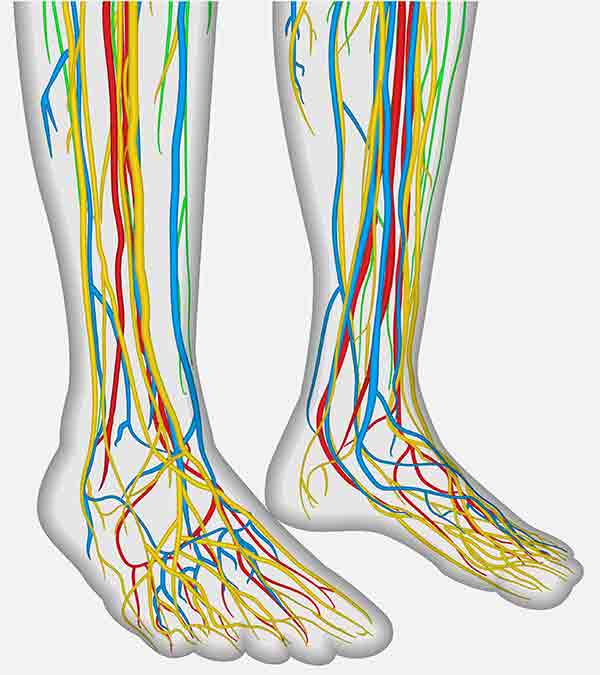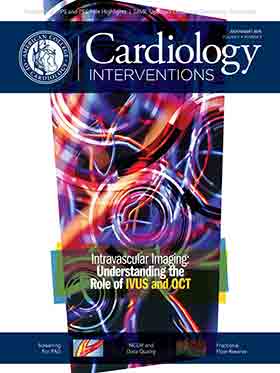Peripheral Matters | Paradigm Shifts in Managing PAD: Dedicated Vascular Specialists, Multidisciplinary Teams Needed

Despite the frequency of peripheral artery disease (PAD) within the U.S. population, historically it has been an underrecognized and suboptimally treated disorder. In a seminal study by Hirsch and colleagues, less than half of primary care physicians in 1999 were aware their patients suffered from PAD.1 Furthermore, these patients less often received intensive therapy for comorbid cardiovascular conditions, including hyperlipidemia and hypertension.
However, over the past decade, we’ve witnessed a resurgence in the investment in this high-risk population. Through increased public awareness, better screening and education, and standardization of clinical, diagnostic and interventional criteria, there has been substantial growth in the understanding and management of patients with PAD.2
A manifestation of this renewed investment has been the conduct of large-scale clinical trials and cohort studies dedicated to studying the PAD population. From these data, we have improved our understanding of the many facets of the disease process and expanded the tool box of therapies necessary to optimize the care of these patients.
For example, following multiple positive large-scale trials, the armamentarium of medical therapies for symptomatic PAD has broadened in just a few years. This includes the introduction of novel agents, such as the antiplatelet vorapaxar, and expanded indications for some agents among those already approved in the classes of antiplatelet, anticoagulant and lipid-lowering drugs.3-9
Moreover, the growth in endovascular devices and therapies has disrupted procedural paradigms for the invasive management of symptomatic PAD. This is highlighted by the rapid approval and uptake in use of drug-coated balloons for the treatment of femoropopliteal disease. As a result of these devices, we’ve observed improved long-term patency rates and a reduction in the need for stent implantation.10,11
Expanding screening programs to identify at-risk patients and those with subclinical disease has also shown great promise. Although, as highlighted in this issue, ankle brachial index screening among asymptomatic adults has not been endorsed by the U.S. Preventive Services Task Force,12 the VIVA screening trial has provided convincing data.13 Through the use of low-cost, low-harm tools to detect abdominal aortic aneurysms, PAD and hypertension among asymptomatic men, VIVA demonstrated a 7 percent relative reduction in five-year mortality with a number needed to screen of only 169.
Lastly, recent studies have provided insights into the heterogeneous biochemical profiles of PAD. This includes a better understanding of biomarkers and lipoprotein particles associated with PAD, which also correlate with disease severity.14,15 We now have a clearer pathway to better individualize therapies and risk stratify patients to target those who may achieve particular benefit from an intervention.
An important consequence of this resurgence is the rapidly changing and increasingly complex knowledge base required to care for patients with PAD. Understanding how to balance the nuances of contemporary medical therapy, manage the numerous high-risk comorbidities that accompany PAD, and appropriately triage when an intervention is needed requires dedicated training in PAD.
This includes specialists from all disciplines – cardiologists, surgeons, radiologists, internists, hematologists, lipidologists and podiatrists. In conjunction, the time is now to invest in multispecialty vascular teams and care centers: progress in therapies brings the need for more coordinated and multifaceted treatment approaches. Recent successful examples of this include the rise of the Critical Limb Ischemia, Limb Salvage and Pulmonary Embolism Response Teams16-18, which have united specialists from all fronts to improve the care of the sickest of sick.
As we move forward, it is exciting to be participating in the care of this unique population at a time when substantial progress is at our fingertips. However, continued investment, both at the clinician and institutional levels, is needed to make real inroads into improving the morbidity and mortality of our PAD patients. United as a team we can make greater advances. With new tricks and better tools, the future is promising for the PAD community.

This article was authored by Eric A. Secemksy, MD, MSc, RPVI, FACC. He was appointed in May 2018 to serve a two-year term as section editor for Peripheral Matters. Secemsky is currently the director of Vascular Intervention and an interventional cardiologist at the Beth Israel Deaconess Medical Center in Boston, MA. READ MORE.
He is also an investigator at the Richard A. and Susan F. Smith Center for Outcomes Research in Cardiology and an instructor in medicine at Harvard Medical School. In addition to his busy clinical volume, he oversees an extensive research program focused on optimizing outcomes for patients with vascular disorders. Secemsky is committed to growing the Peripheral Matters section and engaging thought leaders and experts in the field. Ready to contribute to this section? Contact him @EricSecemskyMD.
References
- Hirsch AT, Criqui MH, Treat-Jacobson D, et al. JAMA 2001;286:1317-24.
- Gerhard-Herman MD, Gornik HL, Barrett C, et al. J Am Coll Cardiol 2017;69:1465-1508.
- Secemsky EA, Yeh RW, Kereiakes DJ, et al. JACC Cardiovasc Interv 2017;10:942-54.
- Bonaca MP, Bhatt DL, Storey RF, et al. J Am Coll Cardiol 2016;67:2719-28.
- Bonaca MP, Creager MA, Olin J, et al. JACC Cardiovasc Interv 2016;9:2157-64.
- Bonaca MP, Gutierrez JA, Creager MA, et al. Circulation 2016;133:997-1005.
- Bonaca MP, Scirica BM, Creager MA, et al. Circulation 2013;127:1522-9.
- Anand SS, Bosch J, Eikelboom JW, et al. Lancet 2018;391:219-29.
- Bonaca MP, Nault P, Giugliano RP, et al. Circulation 2018;137:338-50.
- Rosenfield K, Jaff MR, White CJ, et al. N Engl J Med 2015;373:145-53.
- Tepe G, Laird J, Schneider P, et al. Circulation 2015;131:495-502.
- US Preventive Services Task Force, Curry SJ, Krist AH, Owens DK, et al. JAMA 2018;320:177-83.
- Lindholt JS, Søgaard R. Lancet 2017;390:2256-65.
- Aday AW, Lawler PR, Cook NR, et al. Circulation 2018;July 18:[Epub ahead of print].
- Matsushita K, Kwak L, Yang C, et al. Eur Heart J 2018;39:2412-9.
- Kabrhel C, Rosovsky R, Channick R, et al. Chest 2016;150:384-93.
- Saab F, Mustapha JA. The Nuts and Bolts of Building a Critical Limb Ischemia Program. Available here. Accessed August 7, 2018.
- Suzuki H, Maeda A, Maezawa H, et al. Heart Vessels 2017;32:55-60.
Clinical Topics: Dyslipidemia, Prevention, Vascular Medicine, Atherosclerotic Disease (CAD/PAD), Hypertension
Keywords: ACC Publications, Cardiology Interventions, Peripheral Arterial Disease, Physicians, Primary Care, Hyperlipidemias, Hypertension, Cohort Studies
< Back to Listings

